In Japan, strong rip currents and offshore winds at the country’s more than 1000 beaches often catch swimmers off guard, especially those used to swimming in calm waters. Most beach users can see high wave conditions signalling not to enter the water, but often a person does not know there is a rip current until they are being pulled offshore.
According to WHO estimates, approximately 8 400 people drowned in Japan in 2019. While most of these deaths occurred in the household, many take place at sea or in rivers. The Japan Lifesaving Association (JLA) has been working to reduce the number of drowning incidents on Japanese shores.
“The lifesaving data are very important for understanding potential risks of the beach. If we cannot quantitatively understand what is happening on the beach, various measures are meaningless,” says Toshinori Ishikawa, Drowning Prevention and Rescue General Manager, JLA.
In the first two years, the system has prevented more than 3300 rip current and offshore wind incidents.
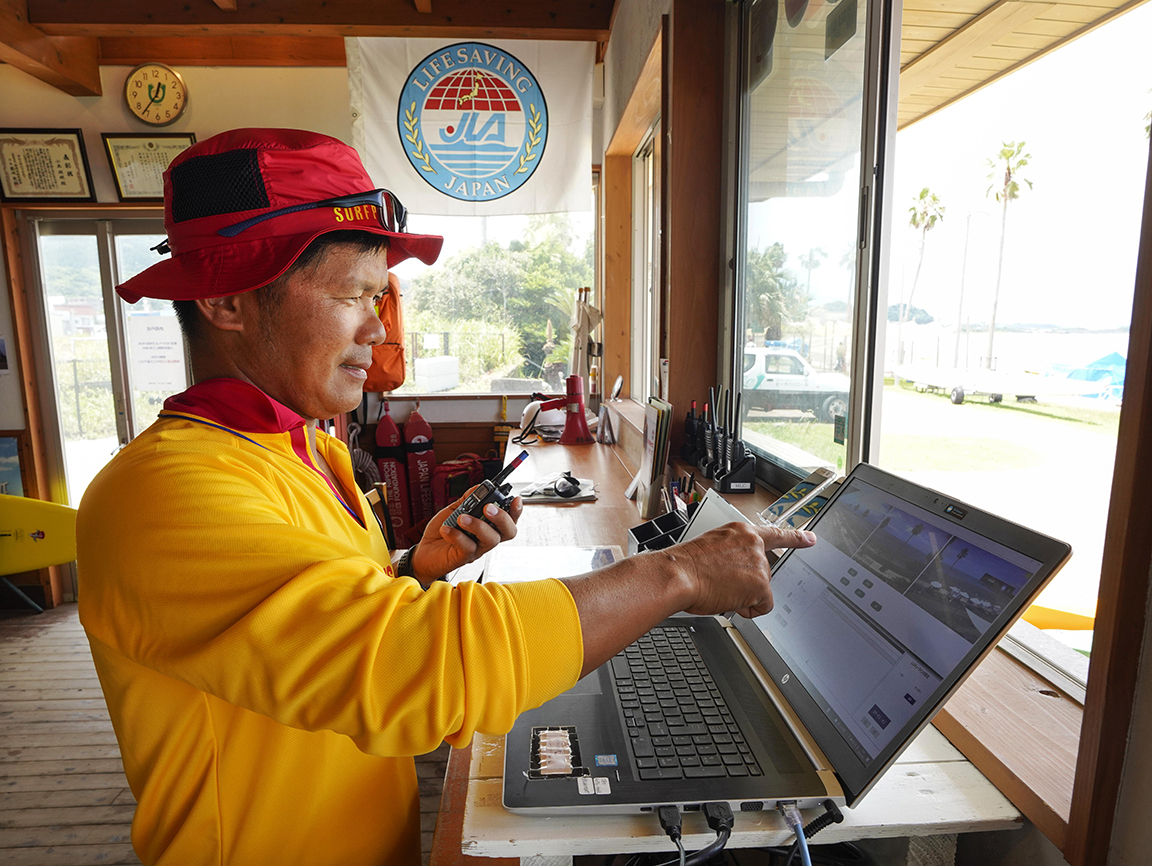
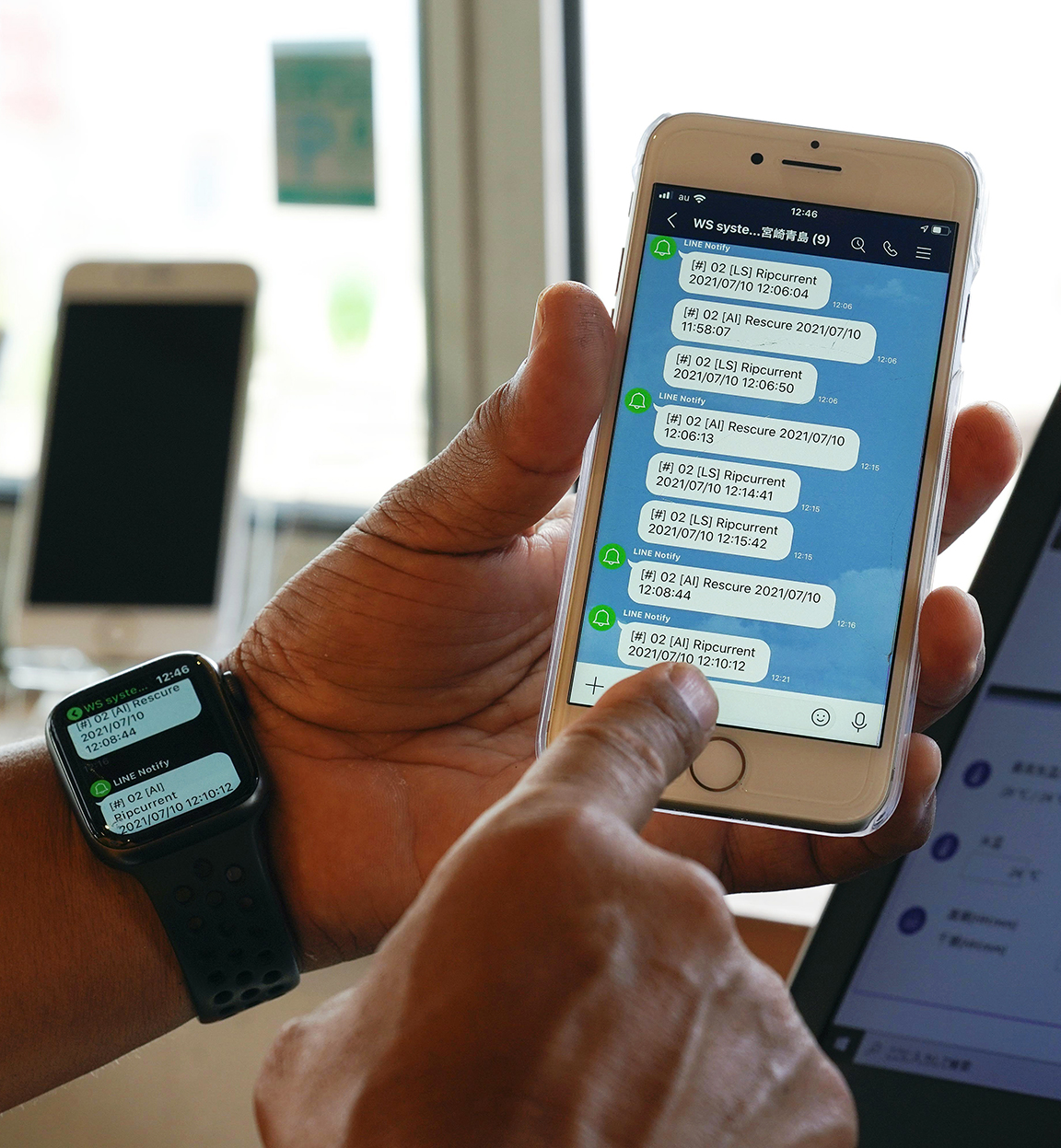
Caption: (Top) Lifesaver and patrol captain Masaki Kodama checks the wind, waves, tides and weather on a laptop for any lifesaving activities at Aoshima Beach in Miyazaki, Japan. (Bottom) A smartphone shows warnings of rip currents at local beaches to inform lifeguards. ©WHO/Mayama
Training more volunteer lifeguards
Because there are few lifeguards in the country, beach users sometimes enter unpatrolled areas outside of the designated swimming areas along Japan’s beaches.
Once participants pass the written and physical tests, they receive a lifesaving license, can wear official red and yellow uniforms, and have permission to become volunteer lifeguards.
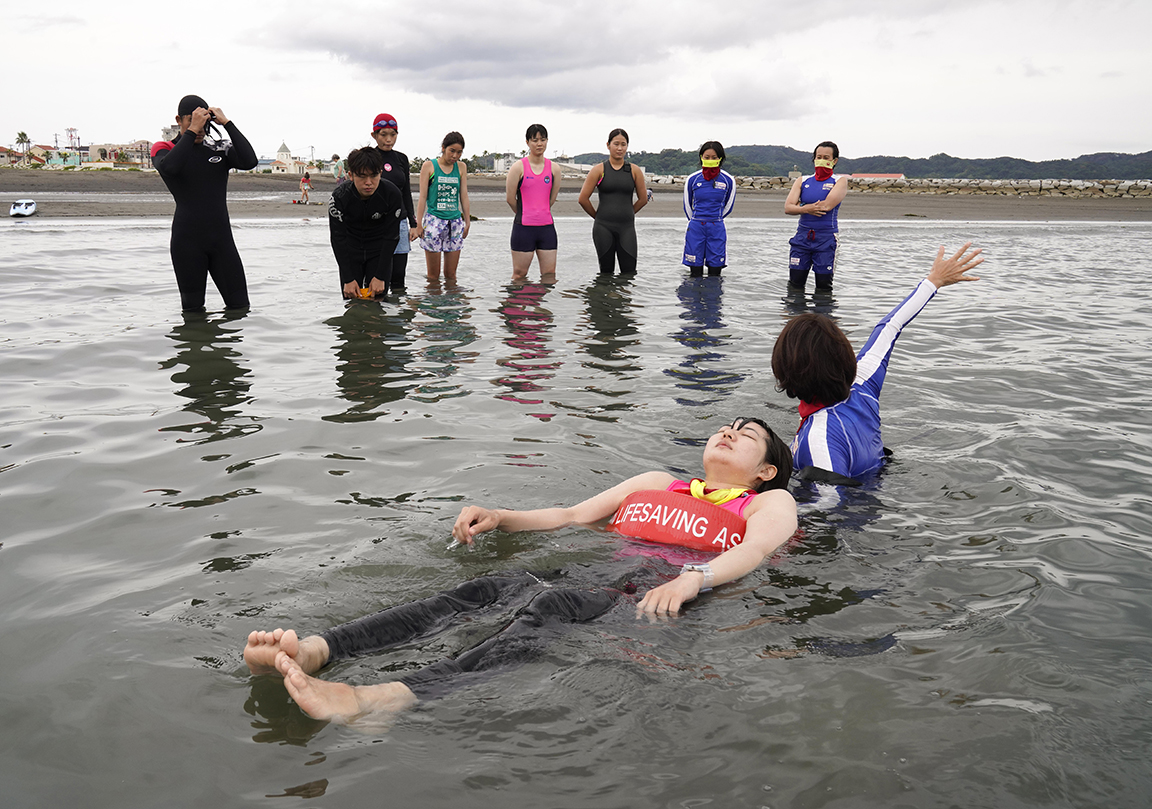
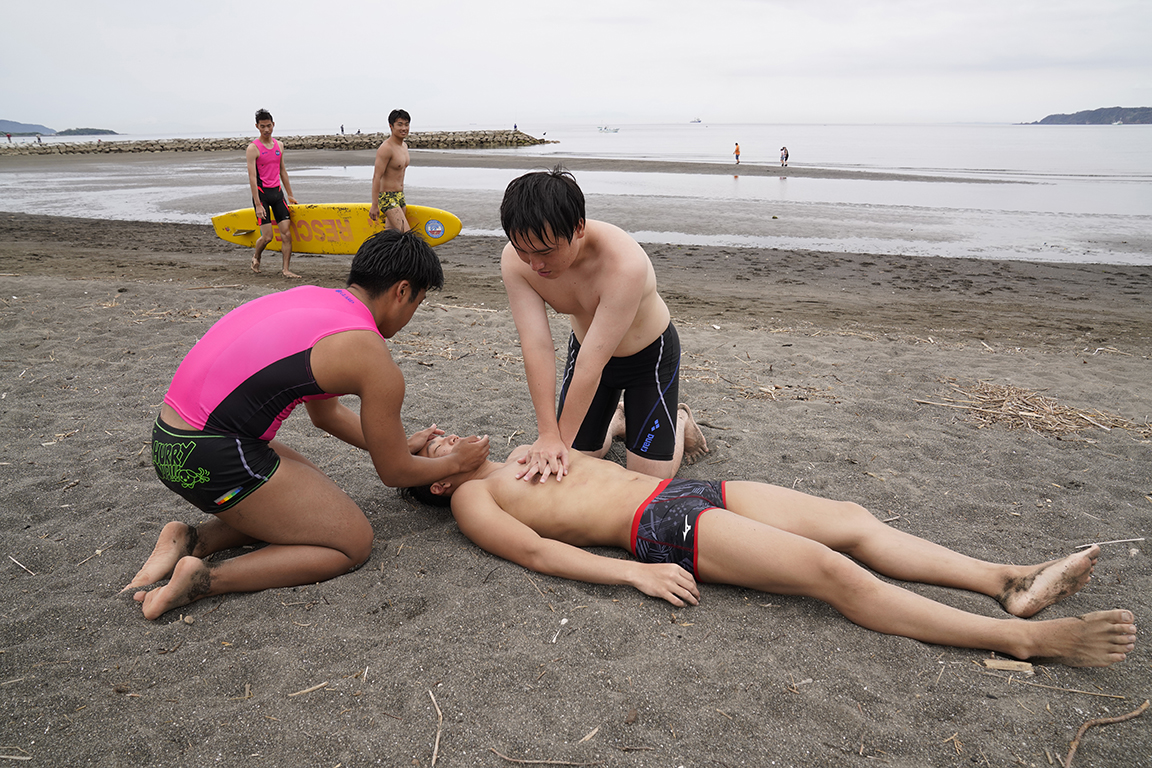
Caption: (Top) Japan Lifesaving Association Academy instructor Yasuko Nakagawa shows students how to help a drowning victim using a rescue tube during a Lifesaving License Course at Hojo Beach in Tateyama, Japan. (Bottom) Students perform CPR during a practice to rescue a drowning victim. ©WHO/Mayama
A key skill lifeguards are taught is to first protect themselves in the water before rescuing others. Prior to the JLA lifesaving course, participants can take a water safety course that teaches them basic water safety skills, such as human chain water rescue.
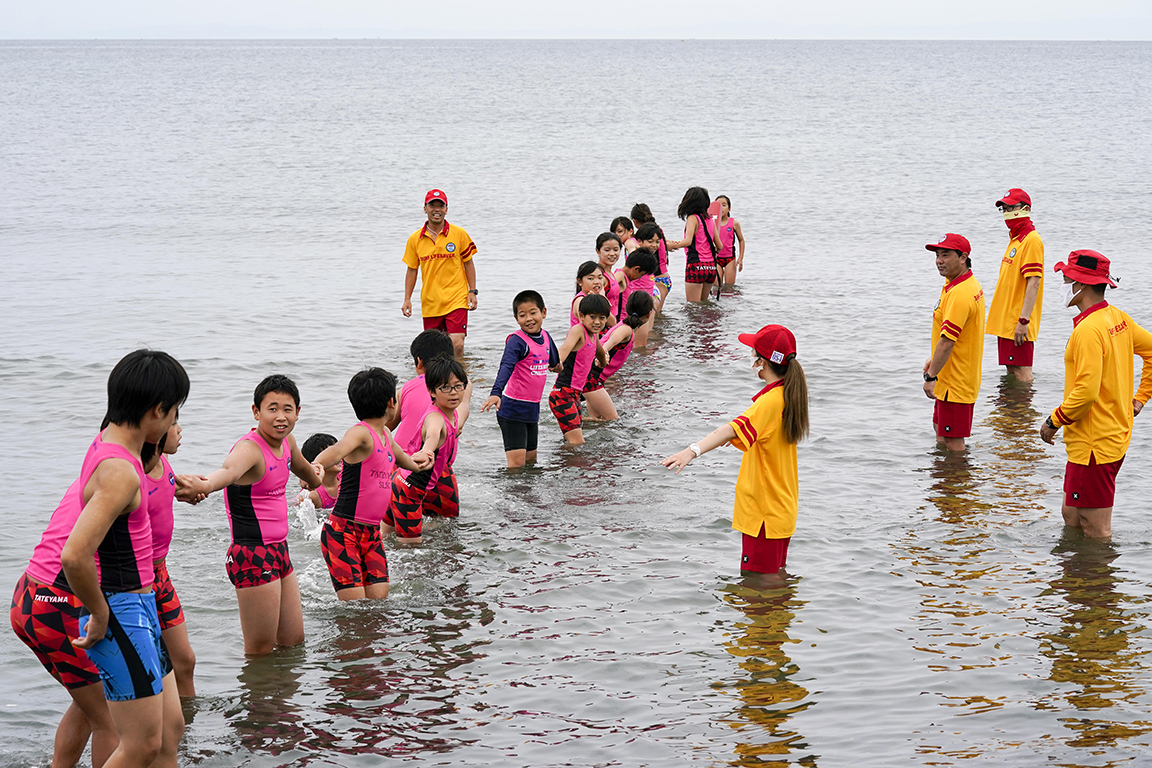
Caption: During a junior lifesaving programme at Tateyama Surf Club, children learn basic ways to rescue a drowning person by creating a human chain by holding hands. ©WHO/Mayama
JLA also works to teach children water safety skills through in-person training, where students can learn to be comfortable in the water, to apply safety skills (such as to never swim alone) and how to communicate if they are in a dangerous situation.
“If you understand water safety at an early age, it will stay inside you when you grow older,” says Yasuko Nakagawa, Director of JLA and Director of the Asia-Pacific International Life Saving Federation. “You never know what will happen in your life, but if you know these things at an early stage it might help you or someone who is suffering. If you know these things, you can prevent drowning.”
An e-Lifesaving programme also provides children with fun, interactive water safety instruction using computers. Through pictures and manga characters, the videos teach children skills such as how to call an ambulance or an adult, how to conduct self-rescue and how to identify unsafe areas to swim.
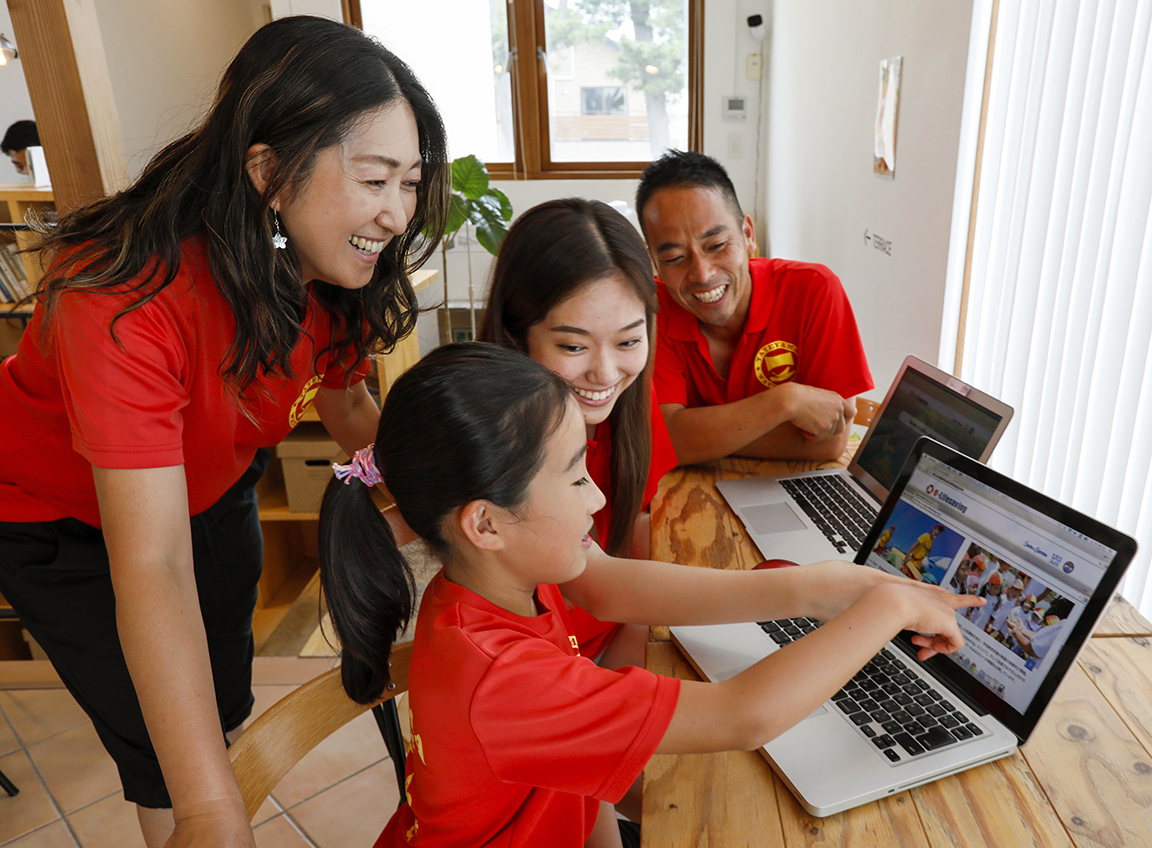
Caption: Rino Saito (foreground), 10, tries the e-Lifesaving course for drowning prevention with her sister Hinano, 18, and her mother Takako (left), 47, and her father Kenichiro (right), 48, who is also a lifesaver. ©WHO/Mayama.
“People who love the ocean, pool or water do not want sad things to happen there,” says Toshinori Ishikawa, General Manager at JLA. “In case an accident happens, we will do our best to be able to return the person to their loving families. It drives us to volunteer for drowning prevention.”
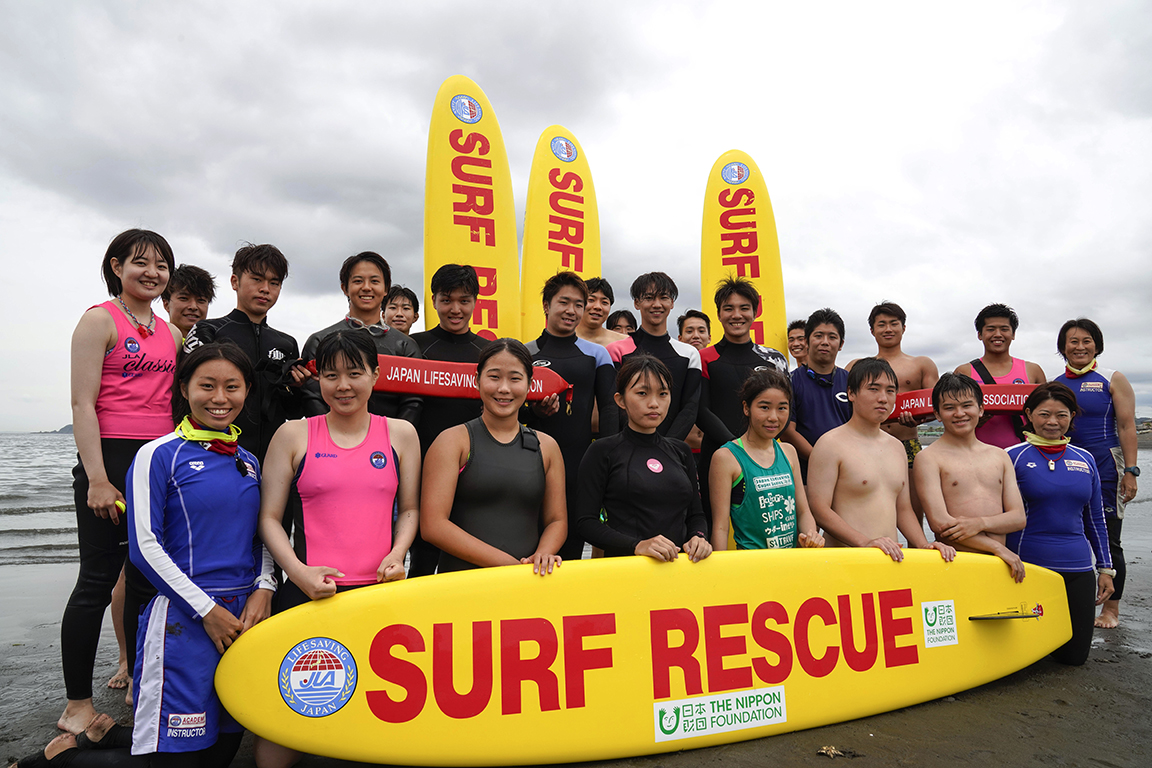
Caption: JLA Academy instructors and students of the Lifesaving License Course. ©WHO/Mayama




